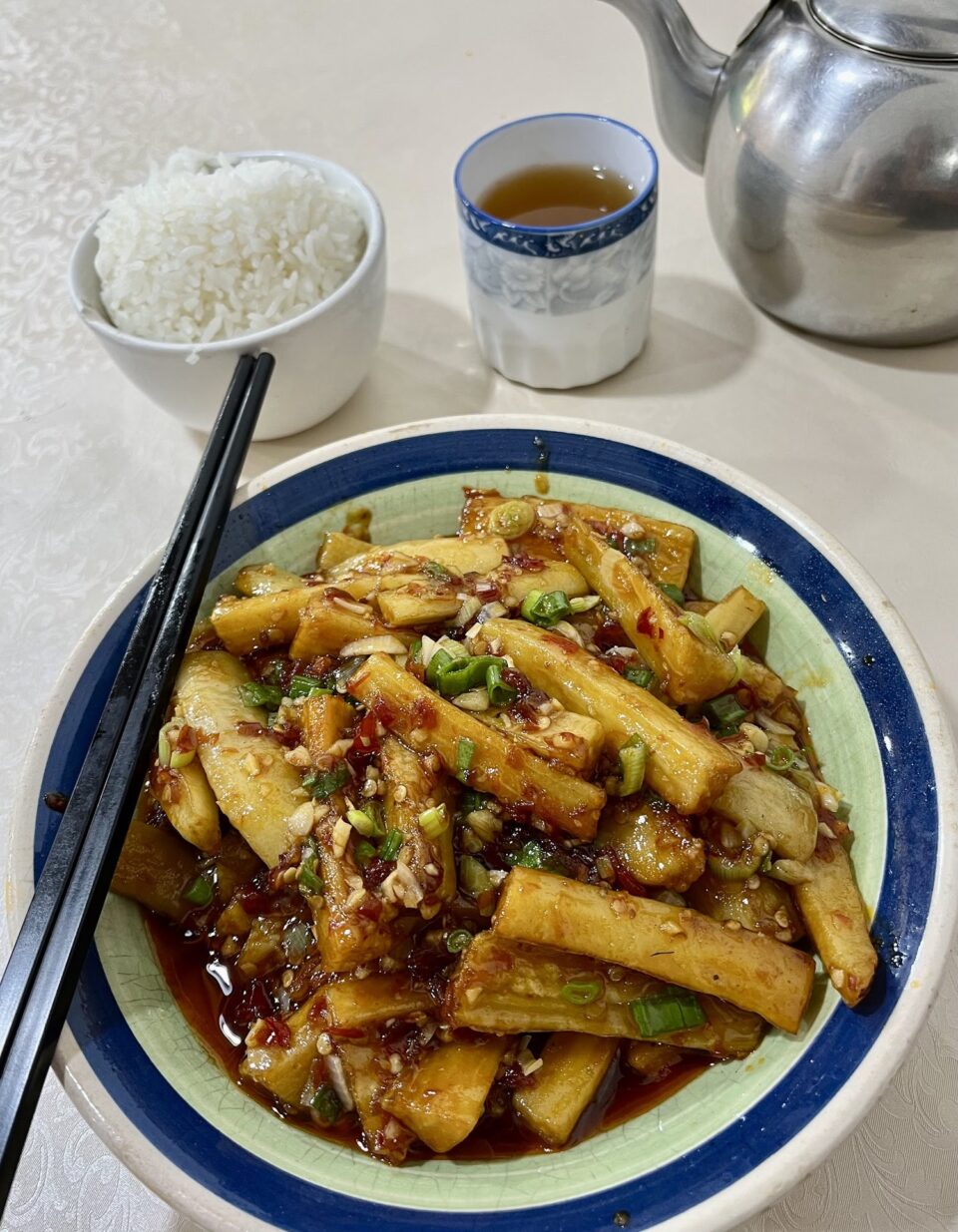
(updated October 2023)
FINALLY SZECHUAN!
Real Chinese food prepared by and for real Chinese is hard to find in this city. Asian Bay, our only fine-dining restaurant, does a good job offering Cantonese fare, a smattering of regional dishes, and a homey atmosphere. A handful of Cantonese restaurants clustered in the Viaducto Piedad neighborhood feed recent immigrants; you can find good southern dishes and even dim sum here. Great Szechuan food, until recently it was non-existent. But a humble restaurant, strangely placed in the middle of the Zona Rosa, which prepares this beloved fiery cuisine, opened a few years ago and then closed during the pandemic. Yi Pin Ju has reopened with an expanded menu.
The mainstay of its menu comes from the southwestern provinces of Szechuan and Shaanxi to the north, where the focus is on the balance of ma-la, spicy and heady. Szechuan pepper is omnipresent as are chili peppers, dried and fresh. A number of dishes are labeled “Sichuan style” which implies an oily red sauce that attempts to numb and stimulate at the same time, a kind of martini/valium taste cocktail. Borrego (lamb) flavored with cumin is common in Shaanxi and here it is offered whole – I didn’t order it – or, better, shredded and stuffed into a steamed wheat bao.
Meat dumplings filled with pork and chives are boiled and served with a fragrant red sauce of chili oil and black vinegar and could make a meal on their own. The flat rice noodles are perfectly sour/spicy but so much so that my northern The companion asked for a glass of milk to ease the pain. I thought they were perfect. The oven roasted duck is tender and succulent. Sichuan style tender chicken they turn out to be small crunchy morsels of boneless chicken fried and deliciously scented with pepper and star anise. Pork strips in a special fish sauce it is not, in fact, pork cooked in fish sauce as it sounds, but in a tangy brown sauce designed FOR fish, and it is spicy but not cruel. Dry-cooked green beans, soaked in dried red chilies that are best avoided, are verdant and crunchy. Overcooked meat with a Sichuan flavour it is thinly sliced, slightly oily and dry pork that, in its double cooking, has absorbed the essence of several types of chili peppers and onions.
While seafood isn’t a specialty here, salt-and-pepper shrimp eschews floured, often grease-laden preparation in favor of quick frying; the shrimp therefore remain moist and tender.
Various Asian vegetables are offered steamed with garlic or oyster sauce; they offset the other sultry dishes well and are a welcome respite.
Here’s the bad news: the menu, presented only as a downloadable QR code, is mostly, but not, illogically, only, in Chinese! On a recent visit, I was able to take screenshots and use Google Translate to delve deeper into it. But it’s worth it. A “fishy aubergine” was sour, sweet and spicy, wonderfully balanced. Xi’an Liangpi, cold peanut noodles, made me want to lick the plate clean. It’s worth it. Of course, it would be easier, if your Mandarin is rusty, to invite a friend who speaks Chinese.

